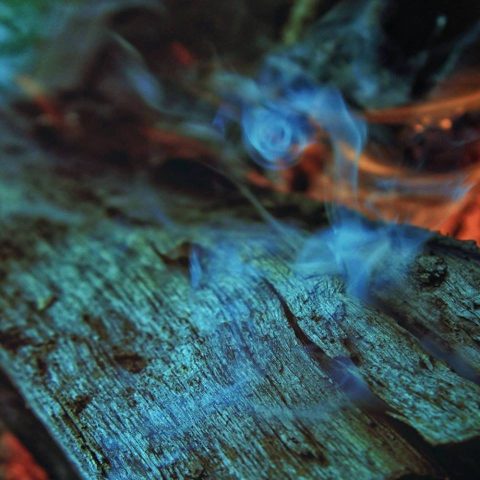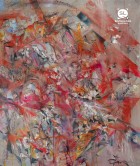Each of the story’s sections unwraps a moment of abandon, which all seem to be responses to the falseness of adult life and the fickleness of it all in the face of our mortality … which begs the question—what was the genesis of this story?
First, thank you so much for reading my work with such care. It’s really flattering to even be asked these kinds of questions.
Yes, abandon! I absolutely set out to explore the idea of how people create pockets of happiness when big-picture situations in life or with the state of the world make happiness seem improbable or maybe even irrational. And I wanted the happiness to come from fleeting but mainly attainable things, like food and affection.
Thematically, the issues here (aging, mortality) came very much from my own life. I wrote this in May of this year, and I turned 50 in July. My kids are in middle and high school. My parents are almost 80. I was thinking a lot about the passage of time. Also, it was spring in the Midwest, and everything had this kind of lush immediacy to it that came with a sort of breath-holding, this beauty of place that lasts briefly and then changes, and I wanted to capture that feeling in the images and language and scenes as best I could.
I can’t help but marvel at this story’s structure. The sections are rich enough to stand on their own, but their intricate relation to one another, especially how the last binds to the first, creates a sense that no moment of abandon is un-tethered from consequence. Did you start with this structure or find it along the way? How do you approach structure in flash, which is often seen as a form emphasizing language?
I started with this structure in mind. Before writing this, I was feeling stuck with regard to structure, and I asked people on Twitter for advice on how to get unstuck and ended up with many incredibly helpful responses. (The thread is HERE if anyone is interested.) This story was a conscious effort to get away from that rising action, climax, falling action, etc. dramatic structure. Instead, I wanted to let these characters for the most part start in and stay in these heightened moments. I also wanted to show the same basic idea from three different related characters’ perspectives and show how their ages and stages of life both change and do not change the way that idea informs their stories. And, yes, I wanted the sections to play off each other to show, as you’ve said, how there is nothing without consequence anywhere, but maybe even more so within a family.
You employ repetition to great and varied effect from the first line to the last. I find the final words—“Happy, happy, happy”—so unsettling! For me, it’s ambiguous whether it’s meant cynically or not, given what seems to be the son’s sincere wonder at his mom’s secret world. In what tone do you read those final words and is ambiguity something you actively invite into your endings?
I did want those last words to be a little unsettling. Overall, I wanted the ending to be both cynical and not. In that final scene, I do think the son is happy for that moment, but I think it’s against the backdrop of the maybe difficult or sinister things he’s discovering about life, the rush of forward movement, the transience of things, the secrets people keep. I don’t mean for the story to be pessimistic but maybe more grounded in this pragmatic view of what life is and what we can do with it.
Also, the repetition: I thought the repetition recreated some of the static and buzz of daily life and its patterns, and then serves as a foil in a way for how these moments of self-indulgence or joy can lift us up out of that or if nothing else just distract us from it.
All three characters have an instantly distinct voice and a clear perspective that pervades their language, its rhythm and humor. What is this art of creating humans like for you?
I’m glad you found them distinct. I worried about that when writing. And “The art of creating humans.” I love how you’ve put that. Well, like many writers probably, I’m constantly watching people and imagining their stories or imagining what they are thinking. (I’m sure I’m wrong about all of it about 95 percent of the time.) But it’s through this kind of conscious and sustained observation that I get a lot of story and character ideas, and I really enjoy the patchwork nature of all of it: stealing some things from my own life and family and then piecing those things together with the ways I’ve imagined the lives of strangers I’ve observed walking into the library or sitting on a bus bench or fighting in a parking garage or whatever.
Given our mortality, the climate apocalypse, the political hell-scape, “blah blah blah”—what impossible act of abandon would you indulge?
I have to admit that my own current moments of abandon are kind of small-scale and boring and involve things like brownies, potato chips, tequila-based drinks, and shitty tv.
But given the climate apocalypse you mentioned and a political agenda designed in many ways to actively hurt and diminish people, I’m all for everyone finding whatever grand and impossible moments of abandon they can find, provided they don’t actively harm anyone.
Also, writing feels a lot like an indulgence on many days. I’m constantly thinking, “Who am I to be doing this? Why am I not devoting this time to more meaningful work?” So maybe that’s my answer.



 The SmokeLong Grand Micro Contest (The Mikey) is now an annual competition celebrating and compensating the best micro fiction and nonfiction online.
The SmokeLong Grand Micro Contest (The Mikey) is now an annual competition celebrating and compensating the best micro fiction and nonfiction online.